How do Russian metal experts turn sludge into gold? (PHOTOS)

The black sludge that accumulates at the bottom of the electrolysis bath in this factory is literally worth its weight in gold because it's comprised of byproducts from the industrial process by which copper is obtained from copper ore. These byproducts include gold, silver and rare elements such as selenium and tellurium, as well as a considerable part of the Mendeleev Table.
Uralelektromed, a processing facility located not far from Yekaterinburg (about 1,700 km east of Moscow), has developed extraordinary expertise in processing these tailings - which is the sludge's technical name - in order to extract the valuable components. Gold and silver bars have been produced here since 1997.
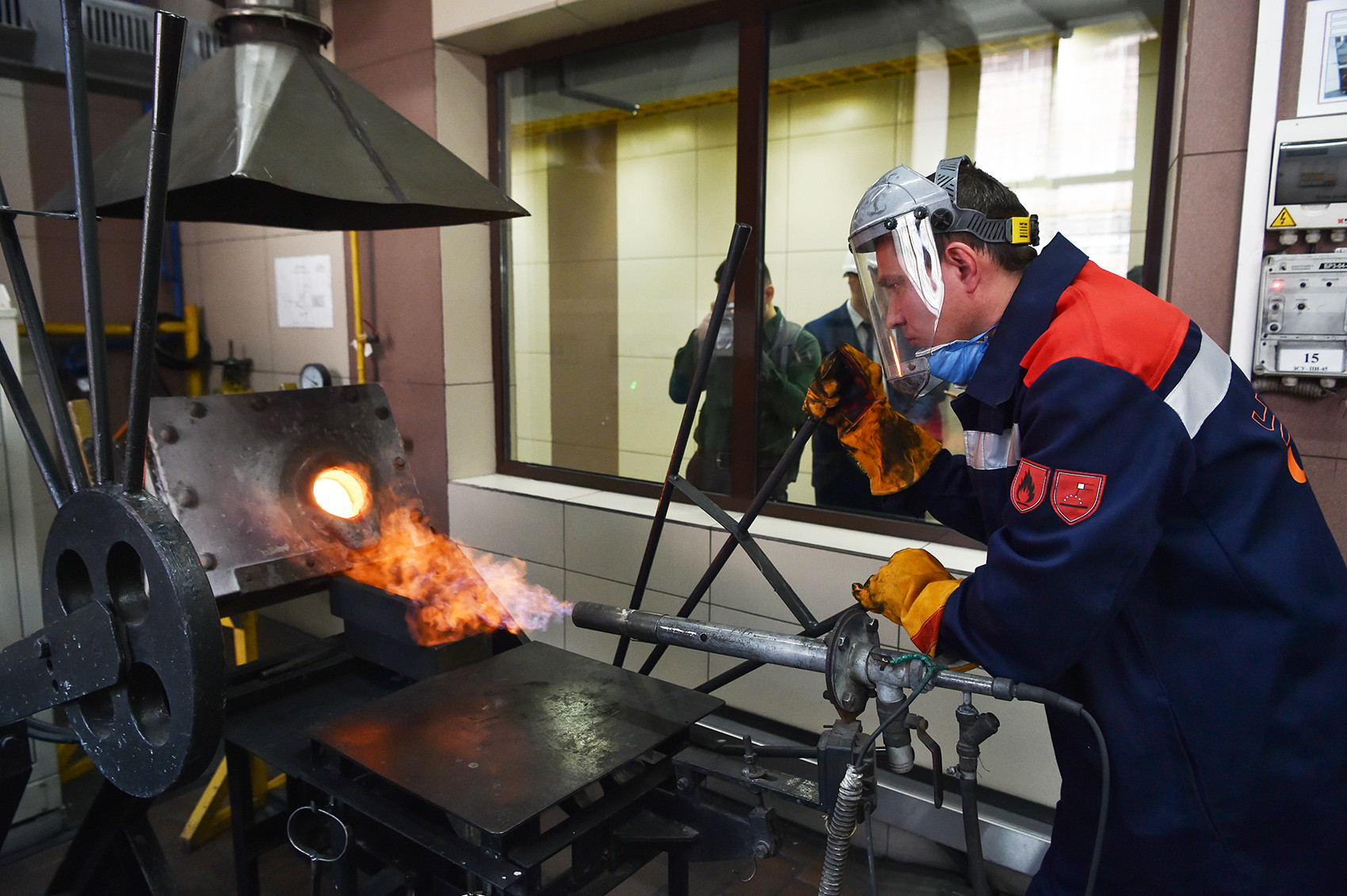
In Russia, precious metals have been extracted from different compounds using chemical processes since the 18th century. Initially, the refining process was the exclusive right of the Moscow and St. Petersburg mints. The technology has been continually improved and passed on to various processing plants. Today, Russia has 10 such plants that utilize these techniques, and Uralelektromed accounts for around 3.5 per cent of gold bar production, as well as 25.2 per cent of the silver on the Russian market. This amounts to more than 10 tons of gold and over 200 tons of silver each year. All this output is a byproduct of copper production.
The power of fire
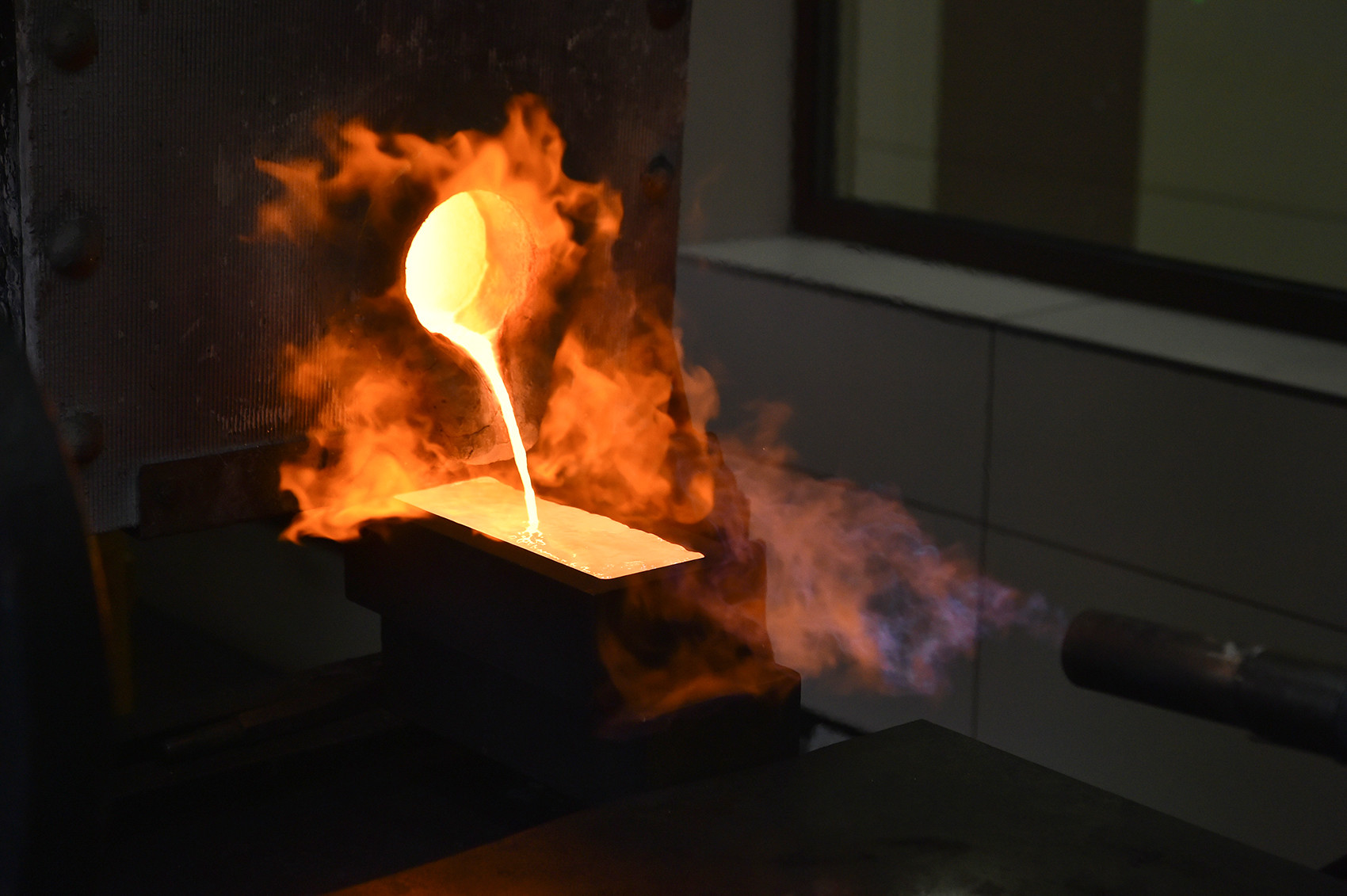
Before the precious bars can be produced from the black sludge, the latter needs to be processed in various ways. First, it needs to be sent down a special pipeline to another production facility where it is treated with sulfuric acid and baked in order to remove any volatile compounds. Next, it's sent on its way for the complex stage of smelting.
The result is a silver-gold alloy, or doré (from the French word meaning "golden," or "gilded"). Chemical reactions are used to break it down further, and the gold will settle with a small amount of impurities. Pure gold powder is subsequently obtained, while the silver remains in solution. Next, it's purified and sent for electrolysis, a process whereby pure silver crystals are deposited on cathode plates.
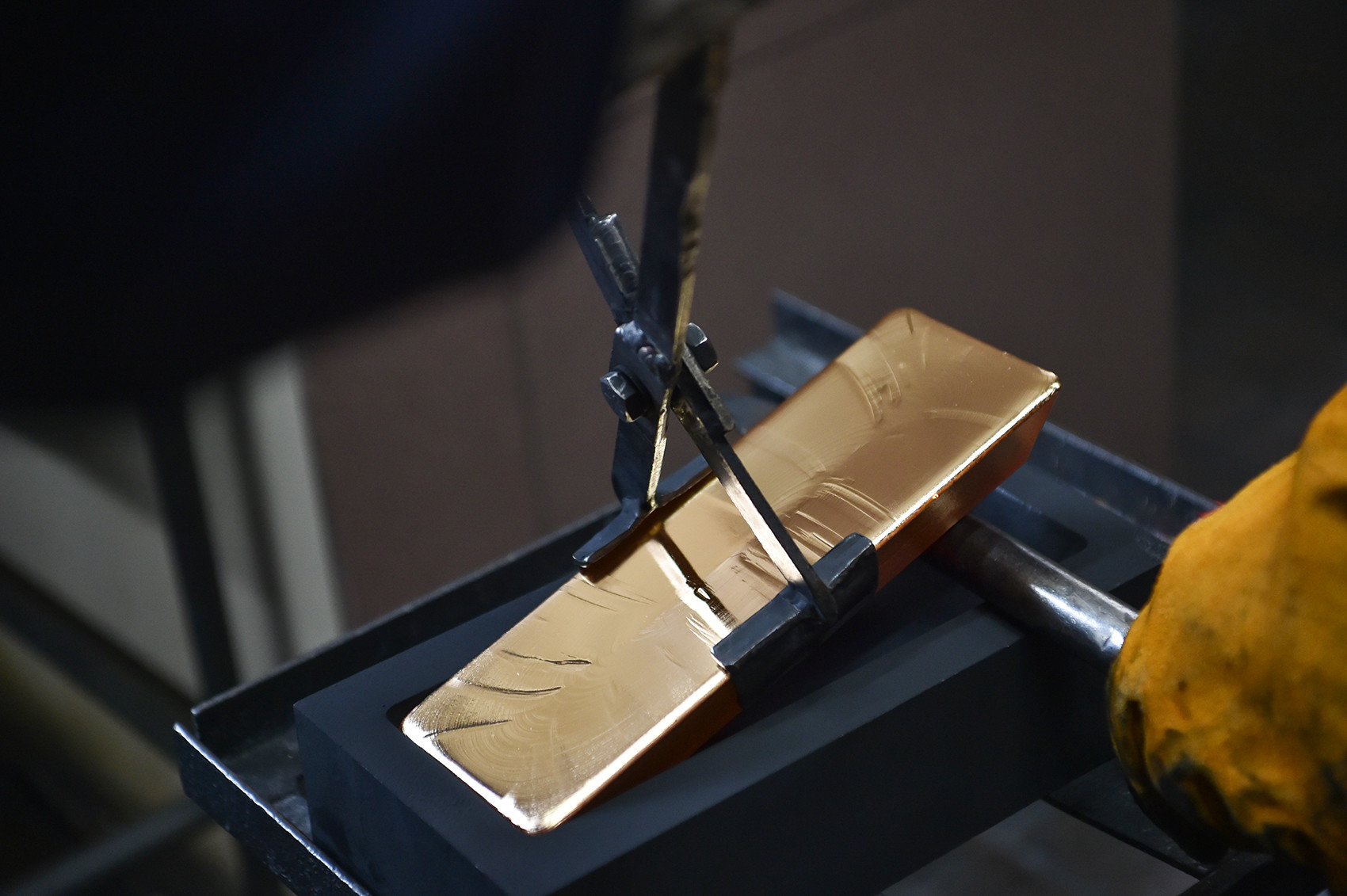
The further fate of the particles of precious metals is identical, and they're sent to a furnace to be resmelted. The incandescent metal is then poured into cast-iron molds. The furnace temperature for resmelting gold reaches 1,100 degrees Celsius, while for silver the required temperature is a little over 900 Celsius.
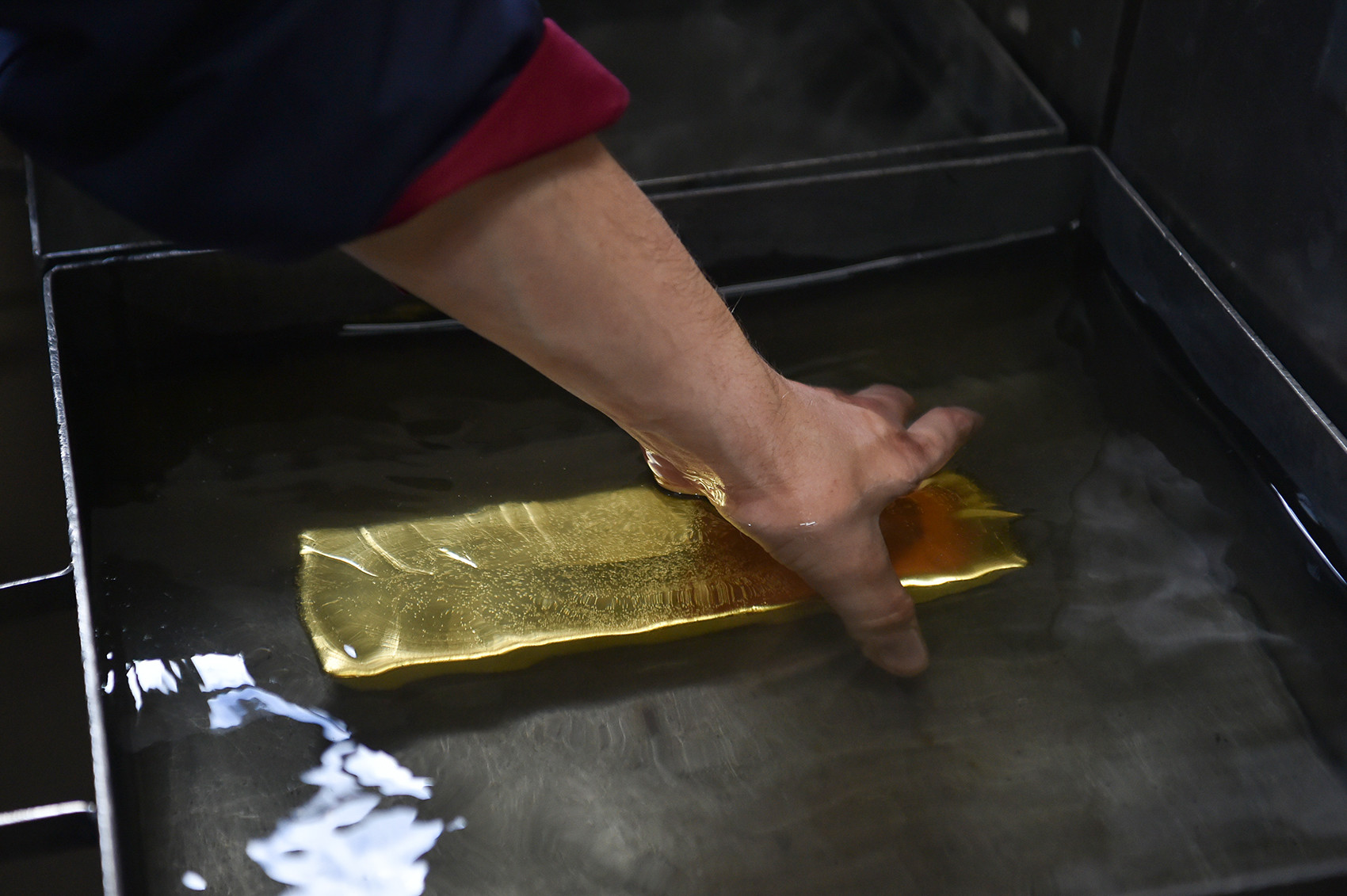
The workers are protected against burns and the effects of the heat by special fire-resistant clothing, gloves and boots. To know how much metal to pour into the mold, a guide-mark is drawn inside with chalk. Then, the mold is treated with a graphite mixture to prevent the gold and silver from sticking to it. As soon as a bar cools, it's removed with tongs, cooled under cold water and wiped with a cloth without allowing the water to dry and leave stains. The whole process takes just five minutes, and then the still warm, freshly smelted bar can be picked up with one's hands.
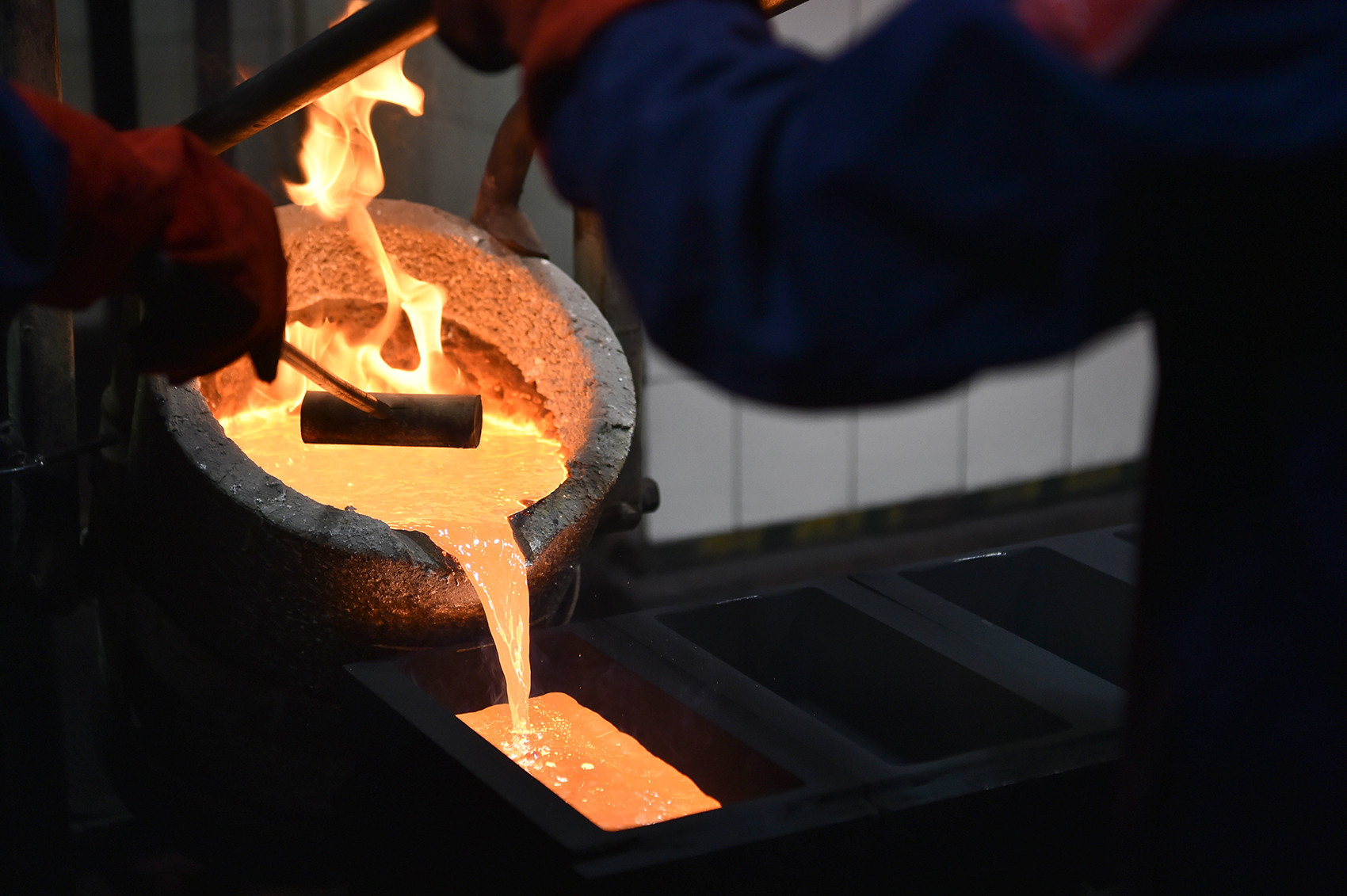
You have to be careful, however. While a gold bar may seem small, it has the weight of an average-size holiday suitcase - around 12 kg; a bar of silver weighs about 30 kg. For this reason they're very difficult to pick up off the table, and, even if you manage, you must be careful not to drop and damage such a precious object. A gold bar is worth more than $500,000 and a silver one more than $15,000. To be suitable for dispatch to the customer, they must be free from scratches and chips.
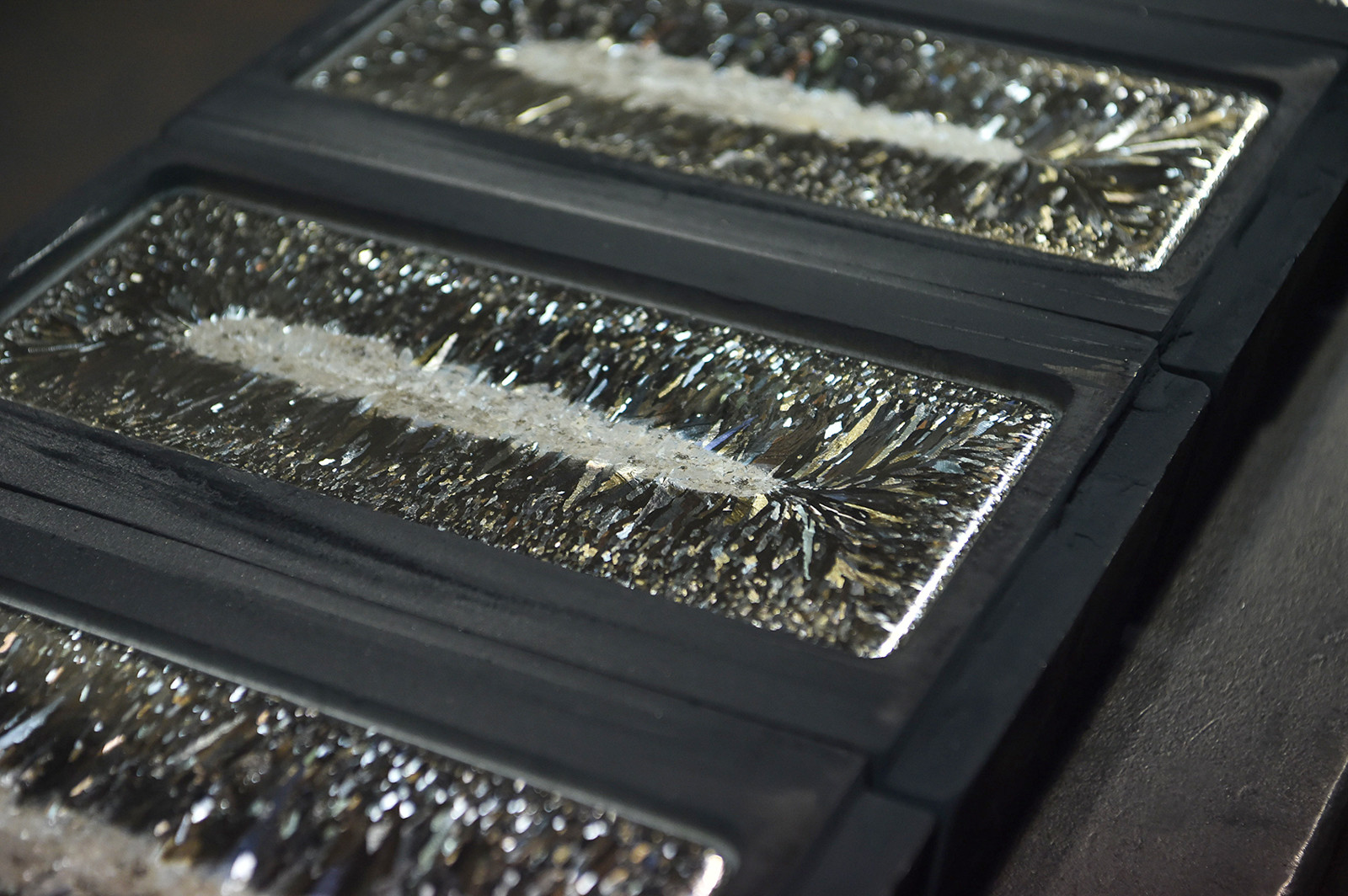
Careful handling
Great care is taken at the plant when handling the smelted bars, and after manufacture they're brought to the finishing department where each is polished to a bright shine. Shavings from the polishing process are collected with a special sealed vacuum cleaner, which is opened once a month in the presence of a team of inspectors. These precious metal particles are returned to the production process. They're again sent for smelting and have to undergo the whole process all over again.
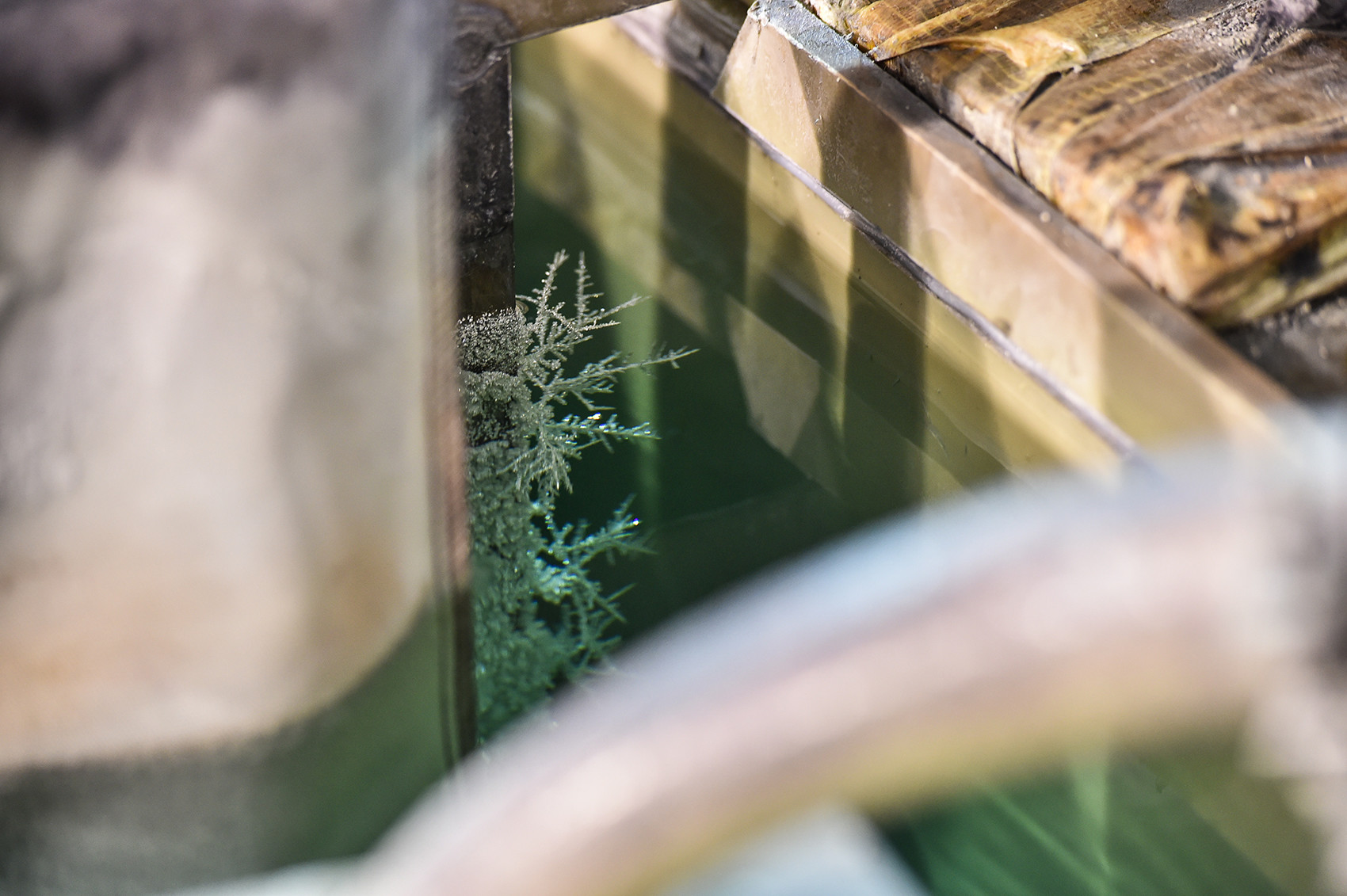
After polishing, the bars are sent to the quality control department where they're weighed and carefully examined. "Gold and silver are a bit like honeycombed chocolate in terms of structure," says quality control inspector Irina Shvetsova, bent low over a bar and examining every millimeter. "I'm checking to see that dirt hasn’t lodged in the surface pores."
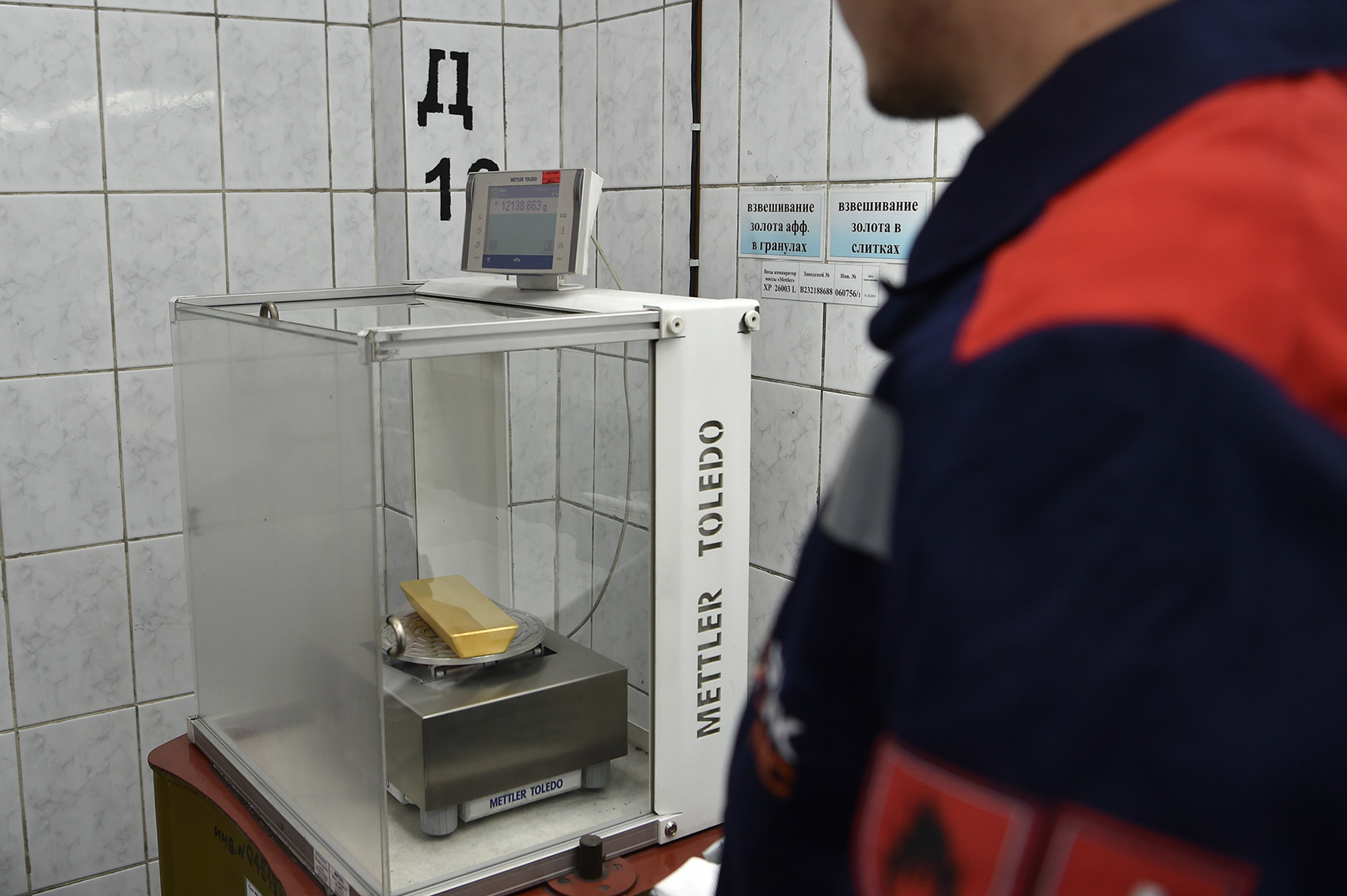
The next step is to apply markings to the bar, which is a job for a strong man because all the necessary details - the processing plant's logo, the gold mark, the purity, year of production and the serial number - are etched on the bar using a stencil plate, hammer and punch.
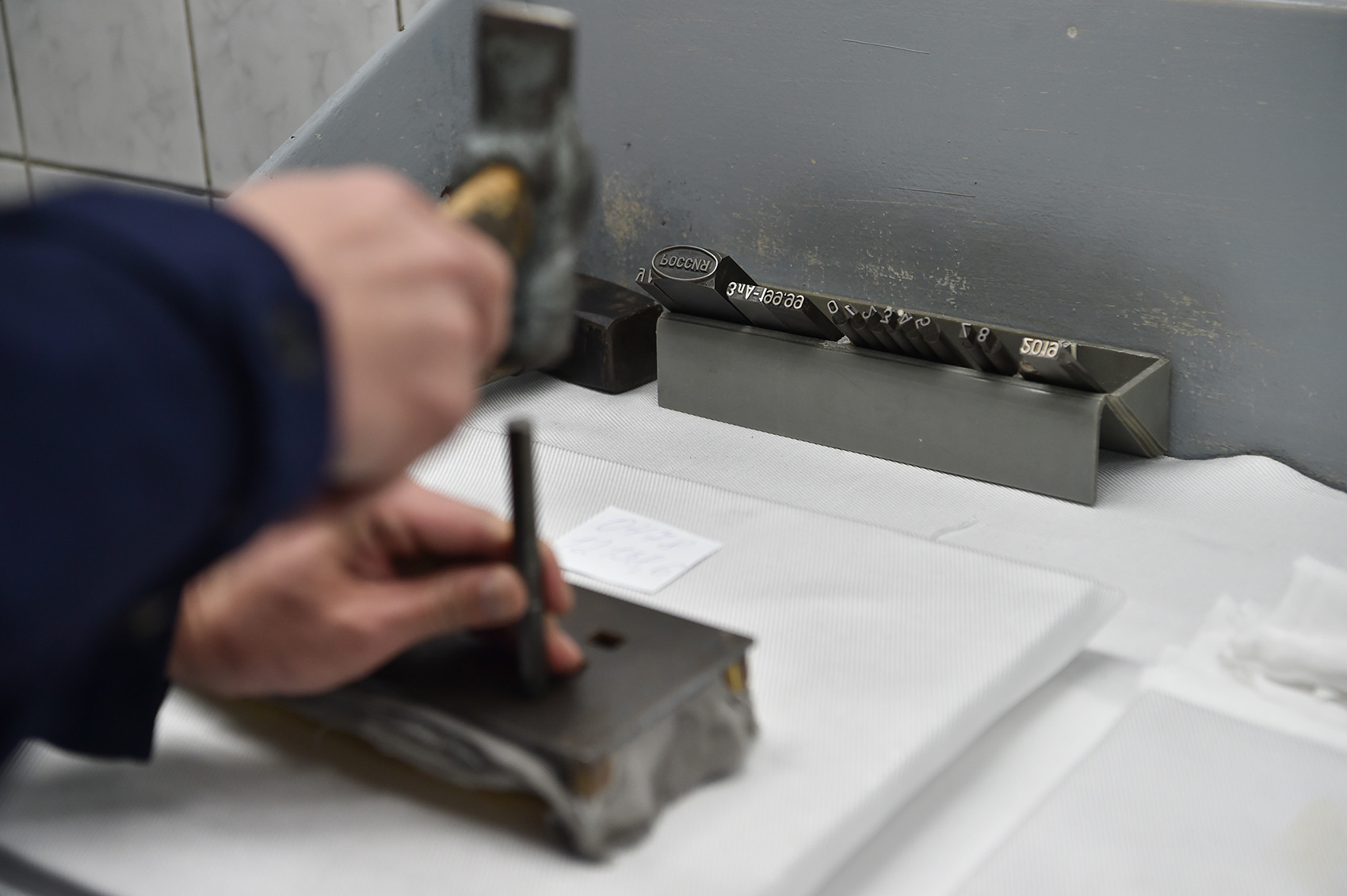
"If you make a mistake the bar must be returned to the finishing room, re-polished, weighed and given a new stamp," says Tatyana Yefimova, head of the production facility's refining department. "Mistakes happen very rarely - we try to avoid them."
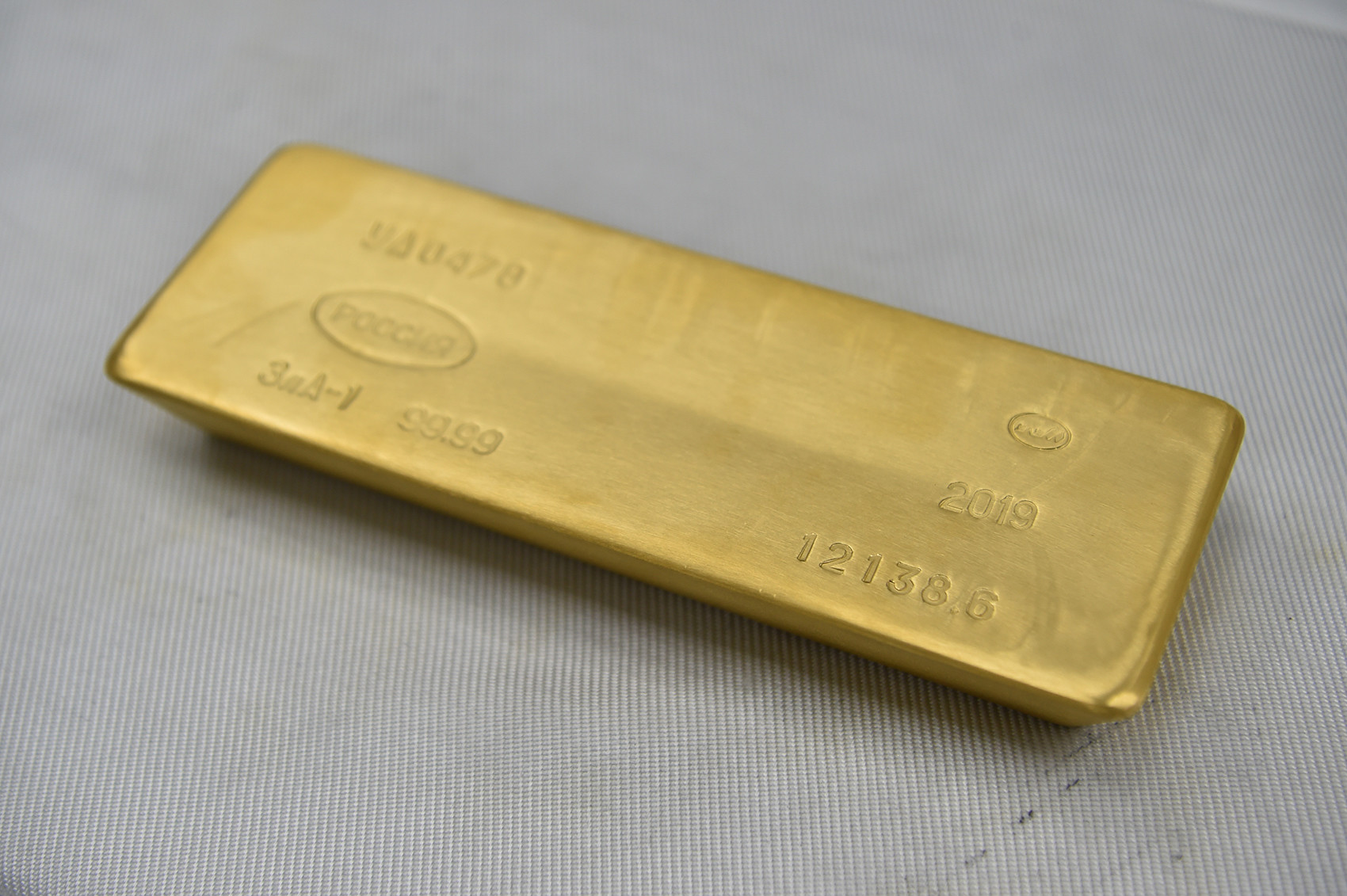
After the bar is checked, it's wiped with pure alcohol to remove any fingerprints, soot and dirt. A souvenir photo is taken, and it's carefully wrapped in polythene, placed in a canvas bag sewn at the plant and put in a special container. Then, the bars are dispatched to Russian banks, from where they can be exported, among other destinations.
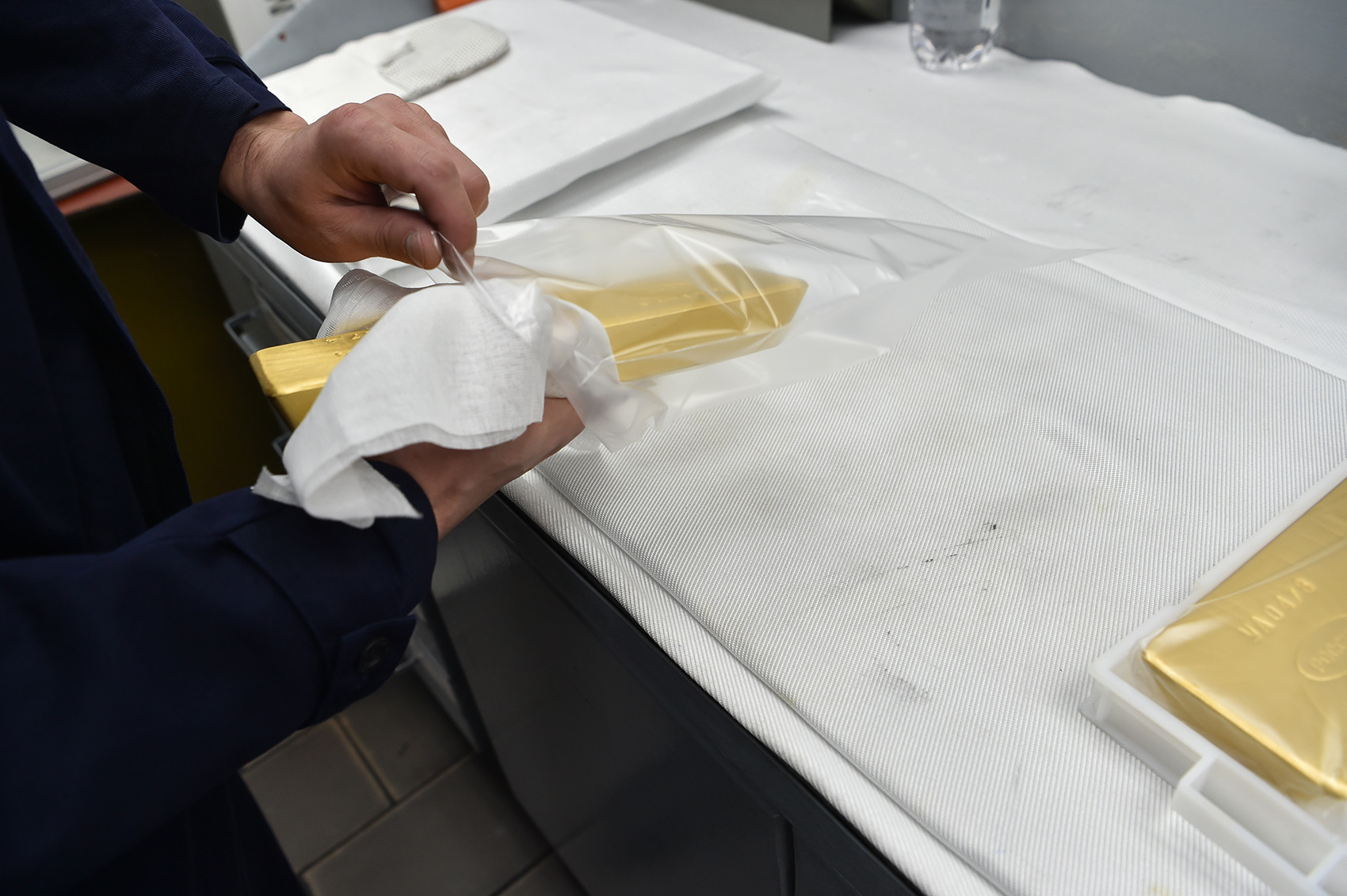
The precious metals obtained as byproducts of the main production process at Uralelektromed have a purity of 99.99 per cent. The high quality of the gold and silver was first recognized in the early 2000s by London Bullion Market experts, who placed the plant on its honorable Good Delivery List. Every three years, the processing plant must pass an inspection in order to have this prestigious status reconfirmed.
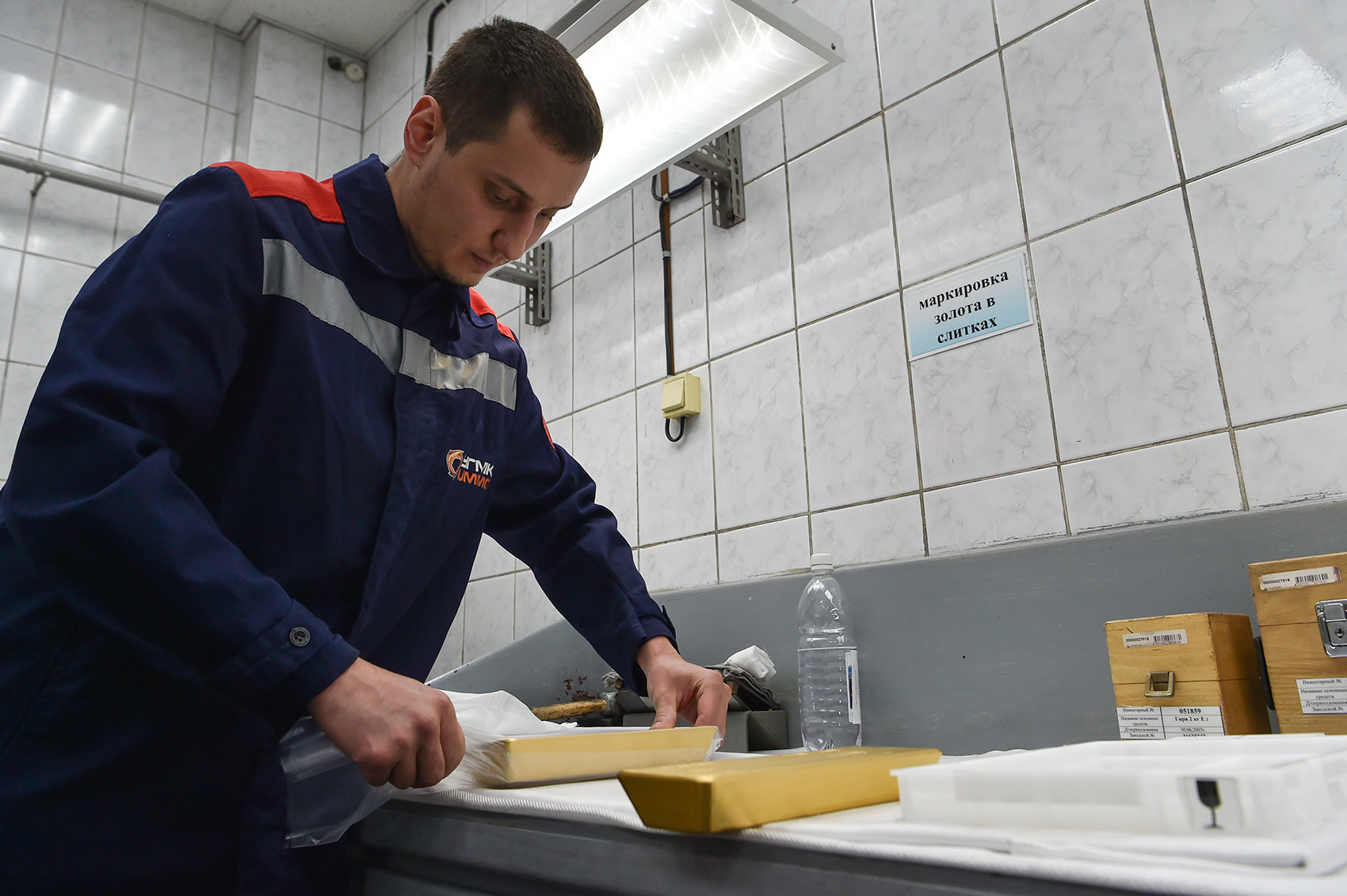
Russia has just five holders of this mark of distinction, so quality control is taken very seriously. Modern precious metal production has come a long way since the days of the fairy tale Rumplestiltskin and alchemy - everything is regulated to the very last detail.
If using any of Russia Beyond's content, partly or in full, always provide an active hyperlink to the original material.
Subscribe
to our newsletter!
Get the week's best stories straight to your inbox